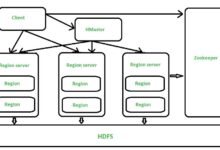What Are the Key Components of Internetworking?

Internetworking forms the backbone of modern communication systems, enabling seamless connectivity between different networks. It involves linking multiple computer networks to create a unified, larger network that facilitates efficient data exchange. Whether in businesses, educational institutions, or global enterprises, internetworking has become essential for ensuring reliable communication and resource sharing. Here, we’ll explore the key components that make internetworking in computer networks possible.
Essential Components of Internetworking
Understanding the primary elements of internetworking helps in building efficient and secure networks. Below are the critical components that enable internetworking functionality.
1. Routers: The Traffic Directors
Routers are pivotal in internetworking, as they direct data packets between different networks. They determine the most efficient path for data to travel using routing tables and protocols. By connecting networks that use different architectures, routers ensure seamless communication. For instance, in internetworking in computer networks, routers manage data flow between LANs (Local Area Networks) and WANs (Wide Area Networks), making them indispensable for larger systems.
2. Switches: Facilitating Internal Communication
Switches operate within a network, connecting devices like computers, printers, and servers. While routers handle inter-network traffic, switches manage intra-network communication by forwarding data to specific devices based on their MAC addresses. This ensures faster and more efficient communication within a single network, laying the foundation for effective internetworking.
3. Gateways: Bridging Different Protocols
Gateways serve as translators in internetworking, connecting networks that use different communication protocols. They convert data into a format that the destination network can understand, ensuring compatibility. For example, a gateway might connect a network using IPv4 with one using IPv6, facilitating smooth communication despite differing protocols.

4. Network Protocols: Establishing Communication Rules
Protocols define the rules for data transmission, ensuring that devices can communicate effectively. Common protocols like TCP/IP, HTTP, and FTP play a vital role in internetworking in computer networks. TCP/IP, for example, ensures reliable data delivery across interconnected networks, making it a cornerstone of Internet communication. Without these protocols, seamless data exchange between networks would be impossible.
5. Firewalls: Ensuring Network Security
Firewalls are crucial for maintaining the security of interconnected networks. They monitor and control incoming and outgoing traffic based on predefined security rules, protecting networks from unauthorized access and cyber threats. In the context of internetworking, firewalls act as gatekeepers, ensuring that only legitimate data flows between networks, thus safeguarding sensitive information.
6. Modems: Enabling Internet Access
Modems are essential for connecting networks to the internet. They convert digital data from a network into a format suitable for transmission over phone lines or fiber-optic cables and vice versa. In internetworking setups, modems play a critical role in providing access to global networks, enabling communication beyond local or organizational boundaries.
7. Network Interface Cards (NICs): Connecting Devices to Networks
Network Interface Cards (NICs) are hardware components that allow individual devices to connect to a network. NICs provide the physical interface between a computer and the networking medium, such as Ethernet or Wi-Fi. In internetworking, NICs ensure that devices can join larger networks and participate in seamless communication.
8. Bridges: Linking Similar Networks
Bridges connect multiple networks that use the same communication protocol, such as two LANs. By filtering traffic and forwarding data packets to the appropriate segments, bridges reduce congestion and improve network efficiency. They are particularly useful in expanding network coverage while maintaining performance.
Conclusion
The key components of internetworking from routers and switches to gateways and protocols work together to enable seamless connectivity and data exchange between networks. By integrating these elements, internetworking in computer networks supports efficient communication, resource sharing, and global connectivity. Whether for small-scale operations or complex enterprise systems, these components form the backbone of modern digital communication, making them indispensable in today’s interconnected world.






